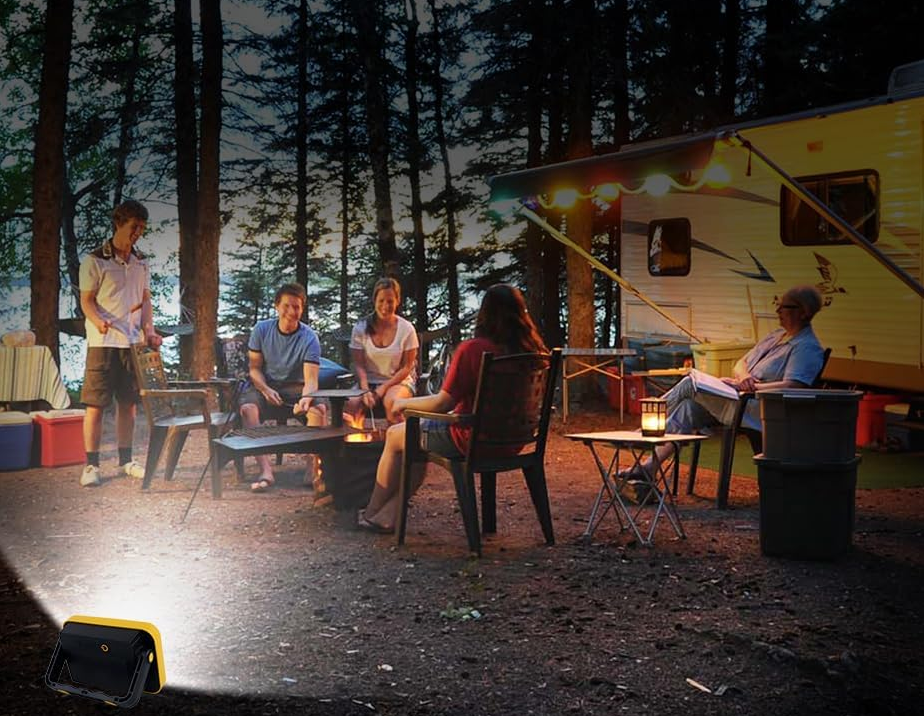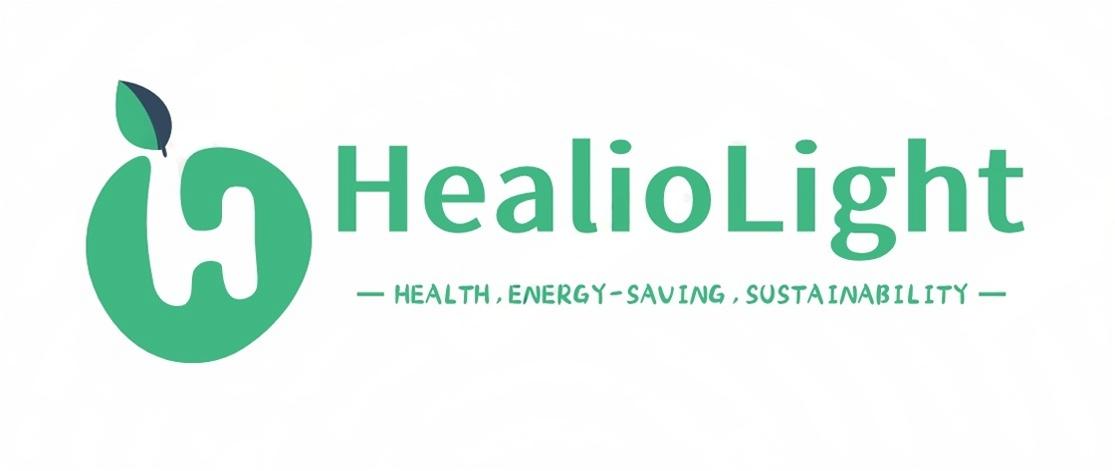Lighting Comparison: LED vs High Pressure Sodium/Low Pressure Sodium 3
LED vs HPS & LPS
Light Emitting Diode (LED) vs High pressure Sodium/Low Pressure Sodium Comparison
Correlated Color Temperature
LEDs are available in a wide range of color temperatures that generally span from 2200K-6000K (ranging from “warm” yellow to light or “cool” blue).
Low and High Pressure Sodium lights are well-known for their warm yellow glow (CCT values around 2200K). Although High Pressure Sodium lamps emit visible light across a slightly more broad spectrum than Low Pressure Sodium lamps, they are still very limited. The downside is that there are very few options outside the narrow range to choose from. In other words, if you’re not looking for a warm deep yellow light, you’re going to have to use something besides Low or High Pressure Sodium to achieve it.
WINNER: LEDs
CRI
CRI for LED is highly dependent on the particular light in question. That said, a very broad spectrum of CRI values is available ranging generally from 65-95.
Low Pressure Sodium lamps are notorious for having the worst CRI values on the market. Typically they fall around 25 on a scale of 100 where 100 is the best possible. LPS lamps emit a monochromatic yellow light which very much inhibits color vision at night.
Color rendering for High Pressure Sodium lights is slightly improved (HPS lights emit a yellow to white light) but it is still much worse than other types of lamps.
WINNER: LEDs
Cycling (Turning On/Off)
LEDs are an ideal light for purposely turning on and off because they respond rather instantaneously (there is no warm up or cool down period). They produce steady light without flicker.
High pressure sodium bulbs may flicker and/or cycle on and off as the bulb reaches the end of its useful life. Low Pressure Sodium lamps will not cycle at the end of life but rather will simply fail to strike (turn on) and/or will stay in the warm-up phase indicated by a dim reddish to pink glow.
Both Low and High Pressure Sodium lights exhibit a short delay when turning on because they need to be ignited before they operate at steady state. Problems with the starter and/or improper matching of a starter and an HPS lamp may cause cycling even though the starter is otherwise working properly as the lamp is continually trying to light itself.
WINNER: LEDs
Dimming
LEDs are very easy to dim and options are available to use anywhere from 100% of the light to 0.5%. LED dimming functions by either lowering the forward current or modulating the pulse duration.
HID lights can be manually dimmed through the use of different electric or magnetic ballast but the process changes the voltage input to the light and can consequently alter the light characteristics. In some cases (particularly with older HID bulbs) dimming can cause the light to prematurely expire. Continuous dimming typically alters the light output from 100% to 30% for High Pressure Sodium lamps.
WINNER: LEDs
Directionality
LEDs emit light for 180 degrees. This is typically an advantage because light is usually desired over a target area (rather than all 360 degrees around the bulb). You can read more about the impact of directional lighting by learning about a measurement called “useful lumens” or “system efficiency.”
All High Intensity Discharge lights (of which HPS and LPS are examples) emit light omnidirectionally. This means they emit light for 360 degrees, requiring fixture housings or reflectors to direct a large portion of the emissions to the desired target area.
WINNER: LEDs
Efficiency
LEDs are very efficient relative to every lighting type on the market. Typical source efficiency ranges 37 and 120 lumens/watt. Where LEDs really shine, however, is in their system efficiency (the amount of light that actually reaches the target area after all losses are accounted for). Most values for LED system efficiency fall above 50 lumens/watt.
Low and High Pressure Sodium lights are the only light whose source efficiency compares to LEDs (values range between 50 and 160 lumens/watt for LPS and slightly less for HPS). They lose out to LEDs in many cases because their system efficiency is often much lower due to losses associated with omnidirectional light output and the need to redirect it to a desired area.
WINNER: -
Efficiency Droop
LED efficiency drops as current increases. Heat output also increases with additional current which decreases the lifetime of the device. The overall performance drop is relatively low over time with around 80% output being normal near the end of life.
High Pressure Sodium lights maintain their luminescence fairly well with 90% still available halfway through their lifespan (around 12,000 hours). HPS bulbs typically emit 80% of their original rated output at the end of life (around 24,000 hours).
WINNER: -
Viable Light Emissions
LEDs produce a very narrow spectrum of visible light without the losses to irrelevant radiation types (IR, UV) or heat associated with conventional lighting, meaning that most of the energy consumed by the light source is converted directly to visible light.
Low and High Pressure sodium lights produce a very narrow spectrum of light (particularly LPS lights). For this reason LPS lights are actually desirable as they minimize electromagnetic interference near facilities conducting astronomical observation.
WINNER: LEDs
Infrared & Ultraviolet
LED - None
HPS - None
WINNER: -
Heat Emissions
LEDs emit very little forward heat. The only real potential downside to this is when LEDs are used for outdoor lighting in wintery conditions. Snow falling on traditional lights like HID will melt when it comes into contact with the light. This is usually overcome with LEDs by covering the light with a visor or facing the light downward towards the ground.
Low and High Pressure Sodium lights emit heat that is absorbed by the ballast and/or lost to the environment. Roughly 15% of the emissions are lost due to energy dissipation and heat losses. In some circumstances heat emissions could be beneficial, however, it is a generally a bad thing to emit heat as it represents an energy inefficiency. The ultimate purpose of the device is to emit light, not heat.
WINNER: LEDs
Failure Characteristics
LEDs fail by dimming gradually over time. Because LED lights typically operate with multiple light emitters in a single luminaire the loss of one or two diodes does not mean failure of the entire luminaire..
Low and High Pressure Sodium lights can fail in a number of different ways. Generally they exhibit an end-of-life phenomenon known as cycling where the lamp goes on and off without human input prior to eventually failing entirely.
WINNER: LEDs
Foot Candles
Foot candle is a measure that describes the amount of light reaching a specified surface area as opposed to the total amount of light coming from a source (luminous flux).
LEDs are very efficient relative to every lighting type on the market. Typical source efficiency ranges 37 and 120 lumens/watt. Where LEDs really shine, however, is in their system efficiency (the amount of light that actually reaches the target area after all losses are accounted for). Most values for LED system efficiency fall above 50 lumens/watt.
HIDs are very efficient compared to CFL and incandescent lights (120 lumens/watt source efficiency). They lose out to LEDs principally because their system efficiency is much lower (<30 lumens/watt) due to all of the losses associated with omnidirectional light output and the need to redirect it to a desired area. By far the most efficient HID variant is the Low Pressure Sodium lamp whose source efficiency can range from 60-190 lumens/watt.
WINNER: Foot Candle ratings are very application specific and vary case by case so it is difficult to say if LPS/HPS or LED would be better performing without the specifics of the particular situation.
Lifespan
LEDs last longer than any light source commercially available on the market. Lifespans are variable but typical values range from 25,000 hours to 200,000 hours or more before a lamp or fixture requires replacement.
High Pressure Sodium lights have excellent lifespan as well (although not as good as LED) which is why they have traditionally been used for outdoor street lighting in municipalities where energy efficiency is at a premium. Typical lifespan values for an HPS bulb are around 24,000 hours. According to American Electric Lighting, “HPS lamps still generate 90% of their initial light output at the midpoint of their life span. Lumen maintenance at the end of life still is excellent at around 80%.” LPS lights last slightly shorter periods of time (typically failing around 18,000 hours of operation).
WINNER: LEDs
Lifetime Costs
LED lighting has relatively high initial costs and low lifetime costs. The technology pays the investor back over time (the payback period). The major payback comes primarily from reduced maintenance costs over time (dependent on labor costs) and secondarily from energy efficiency improvements (dependent on electricity costs).
Low and High Pressure Sodium lights are very cheap to purchase as well as fairly cheap to maintain. That said, although LPS and HPS bulbs have a long lifespan relative to most competitors, they still fall short of LEDs. LPS or HPS lights will still likely need to be purchased several times and the associated labor costs will need to be paid in order to attain the equivalent lifespan of a single LED light.
WINNER: LEDs
Maintenance Costs
LED has virtually zero maintenance costs and the frequency with which bulbs have to be changed out is by far the best on the market.
Low and High Pressure Sodium bulbs are long lasting but will still require replacement several times in addition to the labor cost to monitor and replace aging or expired components all within the lifespan of a single LED.
WINNER: LEDs
Upfront Costs
LED light costs are high but variable depending on the specifications. The typical 100W-equivalent LED light costs somewhere between $10 and $20.
Low and High Pressure Sodium costs vary depending on the specific type of light. Generally they are cheap compared to LEDs ($5-$10 for a 100W incandescent-equivalent LPS or HPS bulb).
WINNER: Low & High Pressure Sodium
Shock Resistance
LEDs are solid state lights (SSLs) that are difficult to damage with physical shocks.
Low and High Pressure Sodium bulbs are fragile relative to LEDs. This is especially true of those bulbs in linear tubes. Like most legacy lamps HPS and LPS lamps operate by using a glass bulb.
WINNER: LEDs
Size
LEDs can be extremely small (less than 2mm in some cases) and they can be scaled to a much larger size. All in all this makes the applications in which LEDs can be used extremely diverse.
Low and High Pressure Sodium Lamps come in all shapes and sizes but are typically used for outdoor applications where size isn’t a major factor. Even so, they typically aren’t produced below roughly a centimeter in width and so they do not compare to the small size and robust build of a solid state light like LED.
WINNER: LEDs
Cold Tolerance
LEDs: Minus 40 Degrees Celsius (and they will turn on instantaneously).
Low and High Pressure Sodium: -40 Degrees Celsius.
WINNER: LEDs
Heat Tolerance
LEDs: 100 Degrees Celsius. LEDs are fine for all normal operating temperatures both indoors and outdoors. They do, however, show degraded performance at significantly high temperatures and they require significant heat sinking, especially when in proximity to other sensitive components.
Low and High Pressure Sodium: We couldn’t find any objective data on fluorescent bulb performance in high temperature situations. If you have any information please contact us.
WINNER: -
Warm-Up Time
LEDs have virtually no warm-up time. They reach maximum brightness near instantaneously.
Low and High Pressure Sodium lights require a warm-up time that varies depending on the light. It can take up to 10 minutes to get the LPS or HPS lamp up to its normal operating temperature.
WINNER: LEDs
Warranty
LEDs: Often 5-10 Years
Low and High Pressure Sodium: Typically 1-4 Years
WINNER: LEDs


